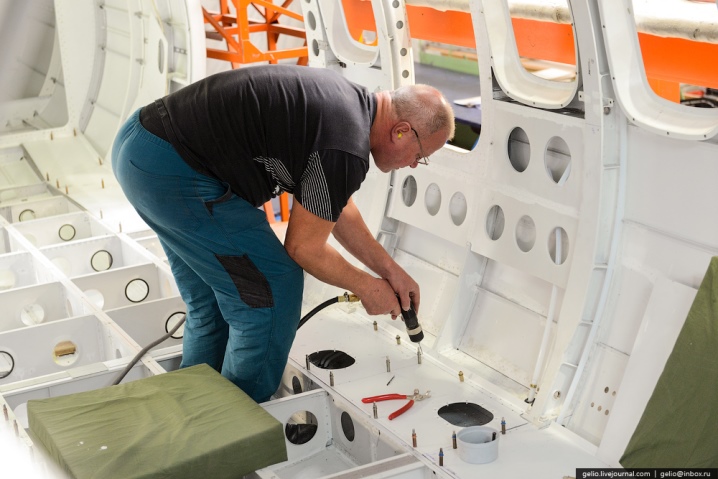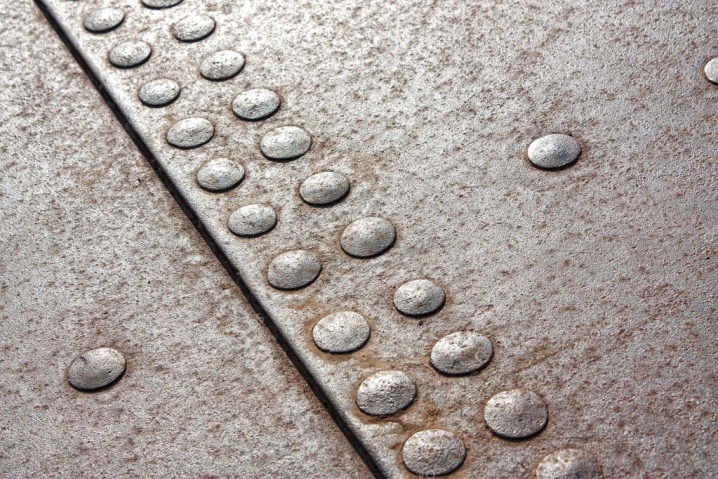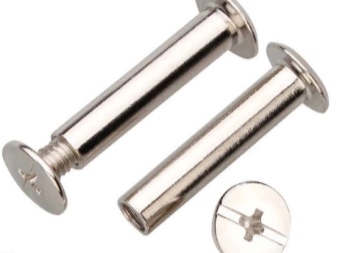Varieties and sizes of aluminum rivets

Aluminum rivets are quite common among craftsmen in various fields of activity. They are used to hold various materials and elements together. This is very important in cases where welding is not possible. This method of fastening has a number of advantages, the main of which is sufficient strength and the ability to withstand diverse loads.

Description
These hardware are used to inseparably connect different materials. Before starting work, you need to make sure that this type of product is suitable for specific details. Generally, a rivet is a smooth cylindrical rod that has a factory head at one of its ends. It is capable of connecting 2 or more elements. For this, the product is installed in a specially prepared hole with a slightly larger diameter than itself.

After the hardware is installed, its back is flattened with a special tool or an ordinary hammer. As a result, the rod becomes approximately 1.5 times thicker, in addition, a second head appears. Aluminum rivets are predominantly painted at the production stage. Most often they are available in black.

It must be said that the use of rivets is quite common in various areas of life.
They are readily used in the construction of ships and aircraft, in the cosmetic and food industries, and are also successfully used in the chemical industry. This is due to the huge number of positive properties that the material of manufacture possesses.

Advantages and disadvantages
Like any product, aluminum rivets have a number of advantages, but also some disadvantages. Let's consider all positions in more detail. First, let's talk about the merits. One of the main advantages is the ductility of aluminum. This is very convenient, since it turns out to be fastened quite quickly.

This characteristic allows you to add here low energy consumption, as well as efficiency. In addition, if you carry out the installation correctly, the strength of the connections will not be in doubt, and work can be carried out even at home, without using special equipment.

Aluminum rivets are affordable both in terms of the cost of products and in terms of work.
Installation is quite easy and most often does not require the use of special tools. Aluminum is considered to be a fairly resistant material, therefore it tolerates well the effects of aggressive substances and does not corrode. It is environmentally friendly, which can also be attributed to the indisputable advantages. Moreover, products made from it are very light.

As for the disadvantages, the following points should be noted. Undoubtedly, compared to copper or steel, aluminum is a less durable material. It should not be used if the structure is expected to be exposed to strong and prolonged mechanical stress. Also, you should refuse to use it if you plan to use aggressive materials. In this case, for example, an aluminum pulling rivet can be used in conditions of negative environmental impact.

If the materials are held together with aluminum hardware, care should be taken to insulate the surfaces as carefully as possible. This will help the metals avoid contact with each other.In this case, it is best to use rubber or copper.
Species overview
As mentioned above, an aluminum rivet is considered to be a hollow or filled cylindrical rod, on one side of which there is a head called a mortgage. Due to the fact that the material is flattened during assembly, a second head also appears on the other side. It is called closing or closing.


Composite rivets should be noted as a separate item. Among them, exhaust or screw ones are especially popular. They are formed by a rod and a body. However, the scheme of work remains the same, when the embedded head rests against the surface, and the second is formed on the other side due to the plasticity of aluminum. Its formation occurs due to the pulling out of the rod, which, as it were, crushes the second part with an expanded area.


It follows from this that the rivets differ in the type of head and the type of rod.
Products with a solid core, hollow and semi-hollow can be distinguished. Let's consider the varieties in more detail.
- Solid bar hardware can handle higher loads. However, it should be noted that their installation can be quite cumbersome.
- Semi-hollow bodies have one solid part of the rod and the second empty part.
- Fully hollow bodies are distinguished by the presence of a cylindrical solid hole. They rivet quite easily, however, they are not designed for high loads.



Riveted heads can also be different.
- Semicircular heads are also called spherical. They are distinguished by increased reliability, the seams are very durable. They are high and low.
- Cylindrical and conical the heads are rather flat. They are especially relevant for use in conditions of exposure to an aggressive environment.
- Also allocate countersunk and semi-countersunk heads... According to the name, they are required to be used in the case when the fasteners must go flush with the surface. Experts advise using such products only when absolutely necessary, since they are considered the most unreliable.



Different types of insert heads can be combined with different types of rods. The selection takes place depending on the load on the object. If its maximum performance is planned, it is required to use a rivet with a solid rod and a spherical head. When the seams are not planned to be heavily loaded, hollow hardware is quite enough, however, tightness cannot be achieved when using them. In a situation where tightness is important, semi-hollow options are suitable.
Let's consider the main types of aluminum rivets and fastening methods in more detail.

Under the hammer
This method can be called the very first, however, while it does not lose its relevance to this day. The fact is that this method is extremely simple.
With its help, it turns out to create one-piece fasteners, with the help of which various elements are connected.

When installing in the parts to be connected, it is required to make a hole of the required size, into which the fasteners are inserted. After that, the parts are pressed against each other, and with a hammer it is necessary to flatten the tip that does not have a head. If required, the heads can be shaped to the required shape using special tools. We use rivets with round or flat countersunk heads.
Pistone
Made in the form of a cylinder with a through hole. There are no hats, so the strength characteristics are an order of magnitude lower than in the previous case.
Can be used when working with plastic, leather or other materials that do not have significant weight.

During installation, hardware is placed in the pre-prepared through holes, and the materials themselves are pressed against each other. With the help of punches, the product is riveted on both sides, this must be taken into account when working, since two-sided access is required.The fastening is not subject to strong mechanical stress.
Mortgages
These rivets often have a punch or shank pre-inserted. It will flatten out when installed, thus forming one head.
Great for when one side of the product is inaccessible.

The hardware is placed in the hole located in both elements. At the same time, the rod will break through the obstacle and will be able to rivet from both sides. However, it should be borne in mind that significant force will be required.
Fume hoods
This type of rivets is used to connect particularly fragile or delicate materials. It combines a punch and a sleeve. It should be noted that carrying out work without using a special tool is impossible. However, at the same time, installation does not cause any particular difficulties, respectively, riveting takes place quite quickly. Blind rivets can be with high strength heads. Also, products of open and closed types are distinguished.

To get the most reliable connection, experts recommend using a product with the first type of heads. They are designed for high tensile and displacement loads. If work is required to be carried out with steel plates, it is better to take open type fasteners. In addition, blind rivets can be combined, sealed, multi-clamped and reinforced.
Dimensions (edit)
Various factors influence size, head type and even strength. Among them, one can note the type of loads acting directly on the rivet, the thickness of the material with which the work is carried out, and its type. The location of the product also plays a role. For example, when it comes to countersunk head rivets, it is advisable to use them in cases where it is necessary to ensure the aerodynamic smoothness of the surface. Universal ones can be used in various situations.

The choice of a rivet for a riveter depends on the thickness of the materials you plan to join.
You can not use too thick products, riveting thin sheets. This can cause the surface around the head to bulge. If, on the contrary, you take a rivet that is too small, the fastening will not be strong enough, due to which it may not withstand the imposed loads.

When choosing the size of the rivet, it is recommended to follow a general rule of thumb. It says that the diameter of the product should be at least 2.5 - 3 times the thickness of the most voluminous of the sheets with which the work is carried out. For example, in the aviation industry, rivets are most often used in the size of 2.5 - 9.5 millimeters. If the diameter is smaller, such products must not be used for load-bearing structures.

However, this is not the only option for sizing. Another way looks like this.
The thickness of the cladding is multiplied by 3, and the rivets are taken those that go further in size.
For example, when sheathing 1 millimeter, the unit is multiplied by 3, the result is 3.0. That is, the rivet further in diameter has a size of 3.2 millimeters.

Regarding standard sizes, they will depend on the type of rivet. Hammer products have a diameter of 1 - 10 millimeters and a length of 5 to 20 millimeters. Exhaust hoods with a diameter of 2.4 - 8 can be much longer, 6 - 45 millimeters. Threaded rivets have indicators of 3 - 10 and 8.8 - 22 millimeters, respectively. They can have both countersunk and universal heads.

The video below shows several methods of fastening using aluminum rivets.













The comment was sent successfully.